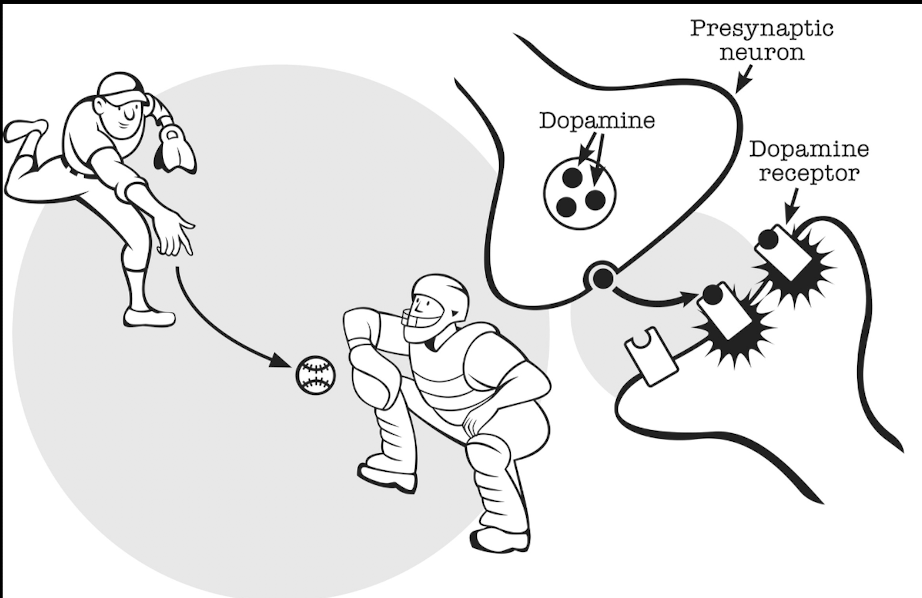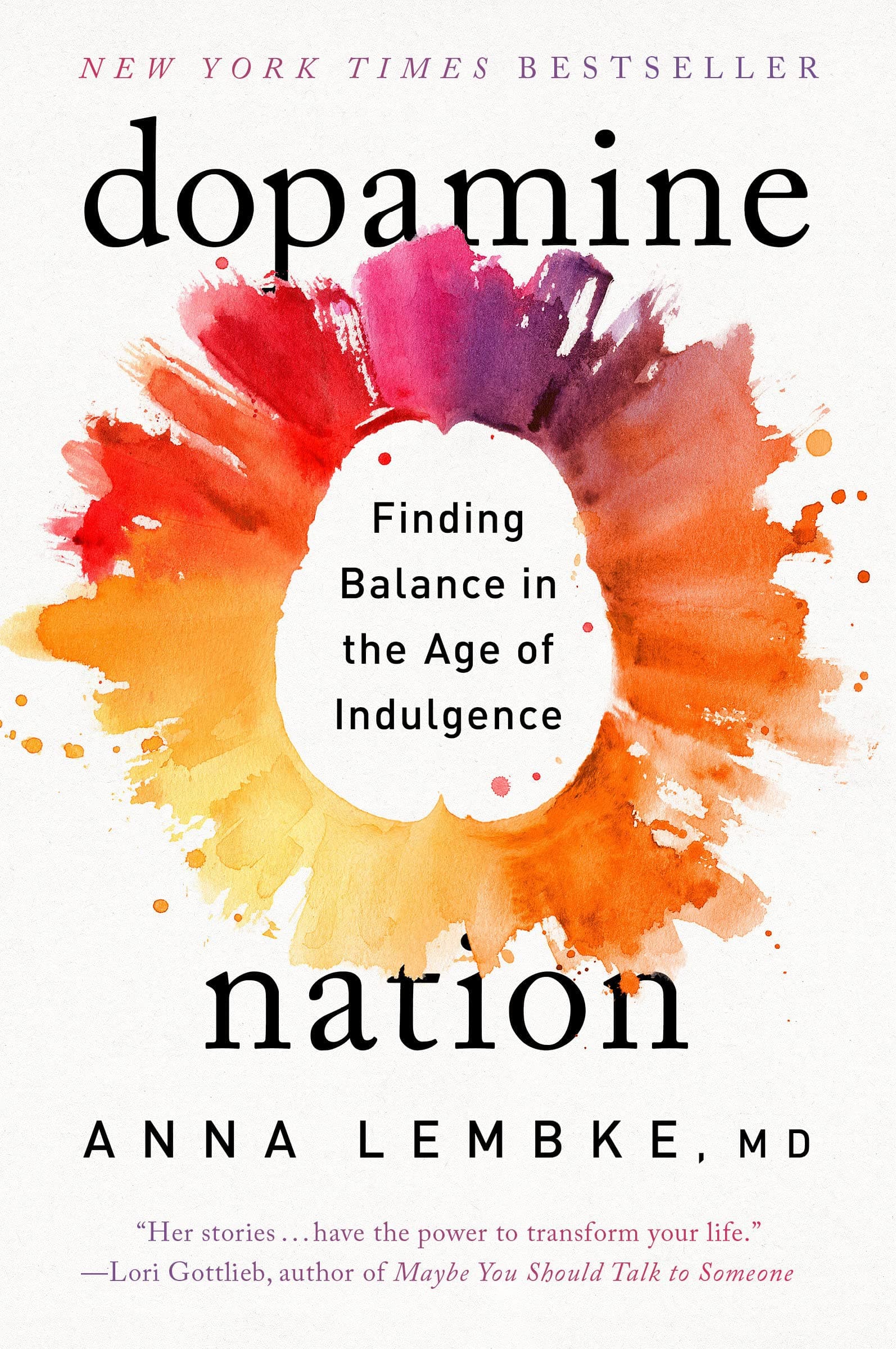- Author: Dr. Anna Lembke
- Publisher: Headline
- Rating: ⭐⭐⭐⭐⭐
- Link Amazon : Book Dopamine Nation
- Pages: 304
- Time to Read: 39 Days
🚀 The Book in 3 Sentences
- There is no pleasure without pain
- It is possible to release pleasure with pressing on the pain side
- A long exposure to increased dopamine can lead to changes in your brain plasticity
🕵🏼Who Should Read It?
The book is applicable to everyone's life. Every person on this earth releases dopamine for everything they do or for everything they are looking for. Knowing what the pleasure-pain balance is has the power to improve everyone's life.
☘️ How the Book Changed Me
I found the book very interesting, as I am a big fan of more scientifically based books. Anna provides interesting real-life examples about the theories she presents from her psychiatric practice. It was astonishing for me to learn that we humans are basically not meant to be happy all the time. Due to the pleasure-pain balance, it is biologically not possible to be happy all the time. After reading this book, I now think differently about the phases of one's life where things don't seem to work as smoothly as in other times. I think of them as something human and not something that is bad.
✍️ My Top Quotes
“Persons with severe addictions are among those contemporary prophets that we ignore to our own demise, for they show us who we truly are.” Kent Dunnington
“Any prolonged or repeated departures from hedonic or affective neutrality have a cost.” Richard Solomon and John Corbit
📒 Summary + Notes
The general topic of the book, as the name suggests, is Dopamine. Dopamine is a neurotransmitter that bridges the distance between neurons, much like a baseball bridges the distance between the pitcher and catcher. Dopamine is known as the 'feel-good' hormone as it is responsible in our body for rewarding us when we achieve something. Although scientists have discovered that dopamine may play a bigger role in the motivation to get a reward than the pleasure of the reward itself.
The problem is that dopamine does not know if we do something to survive and preserve our race or if we are just lazy lying on the couch watching Netflix. Because our brain and our reward system are not made for the highly stimulating environment we live in, they suffer under immense overload. When we eat a fat Big Mac, our brain thinks we hunted the biggest animal on the planet and awards us for being so brave and feasting our body with so many calories and fats. What our body doesn’t know is that we have the potential to eat an unlimited amount of Big Macs because we left the era of hunting many centuries ago.

Dopamine as a Neurotransmitter
Part 1: The Pursuit of Pleasure
As already mentioned, we live in a world with an abundance of dopamine-rewarding technologies and things to do. What we lack is the ability to cope with that and handle it. That is how we get addicted.
The definition of addiction is as follows:
Addiction is the continued and compulsive consumption of a substance or behavior (gambling, gaming, sex) despite its harm to self and/or others.
And why do we consume these substances or continue to engage in that behavior, you may ask? Because the consumption releases dopamine.
The problem is that these substances and behaviors are so easily accessible. We need zero effort to go from the couch to the fridge, and already we are able to consume as many calories as we want.
The pleasure-pain cycle
In addition to discovering dopamine, scientists also found that pleasure and pain are processed in overlapping brain regions. This means that pleasure and pain work in a balance. As a result, the balance does not want to be out of balance on either side for a long period of time. Because of that, it is biologically impossible to be happy all the time. Also, this implies that even if you only pursue things that make you happy, you will not be happier compared to someone who sometimes does something that they do not like.
Part 2: Self-Binding
There are multiple ways to address a dopamine 'overdose.' The goal of all these methods is to reset the dopamine level to a normal state. One of the mentioned ways, for example, is to undergo a dopamine detox. This is a widely discussed topic, and multiple videos can be found on the internet about how to do that. In short, it involves the absence of highly stimulating activities or consumptions for a period of time. One method to achieve this is the method of self-binding, where you make it as difficult as possible to consume or engage in certain behaviour.
Part 3: The Pursuit of Pain
Due to the fact that pain and pleasure work in balance, pleasure can be attained by pressing on the pain side. This is, for example, the explanation for the good feelings after a gym session or the hype after an ice bath. A study conducted on dogs found that when dogs were given small electroshocks, they whined, and their heart started pumping fast. However, after some time, their heart rate fell lower than the average heart rate before the shock. This meant that they were more relaxed than before the shock. Also, the repeated exposure to this shock led to a decrease in the shock, but the feel-good feeling lasted longer than after the first time.
Because of all these factors, we should manage our dopamine consumption much more, especially as a child. Overconsumption can lead to long-lasting changes in brain plasticity. That is why it is important to manage the consumption of dopamine, as it can lead to depression and a loss of motivation. I highly recommend reading this book as it contains much more information than it is possible to mention in this blog. I hope you like this blog and I look forward to to seeing you reading my next blog post.
Regards Devin Hasler

